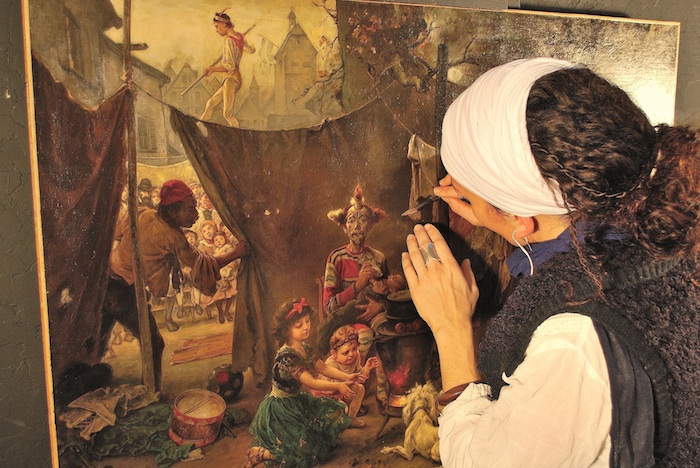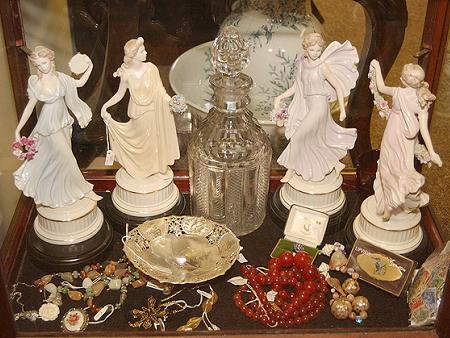“Restoration” of paintings is a subject surrounded with considerable mystery. It is true that in the hands of an experienced restorer and with modern facilities, some remarkable jobs of restoration have been done, and if the painting warrants, it is a good idea to get the best talent to work on it. We frequently see paintings that need little more than cleaning. Are there any methods that the average dealer or collector may apply?
Although strictly speaking there are no “safe” methods of really cleaning pictures, in that they are fool proof under all conditions, there are methods that may be used by anyone who is used to handling paints and oils, and who will exercise a bit of judgment in his work.
A large part of the difficulty of cleaning pictures arises in the fact that no one knows what an old painting may be made of. Painters at various times and in different situations used all manner of pigments and all kinds of oils, dryers and resins to mix them in. Water paints, oils, vegetable and mineral colours and liquids were used if they seemed to give desired results, and sometimes they stood the test of time and sometimes they didn’t. Cleaning them is a matter of removing the dirt, without removing the picture, and to do this we have to find a solvent that is harmless to whatever the artist used. Even in the hands of an experienced workman this is largely a matter of trial and error, and the ability of staying out of trouble is simply a matter of stopping before you get into it.
If a painting has a good tight surface with no cracks to let the water penetrate behind the paint and loosen it, surface dirt and grease may be removed with mild soap and water, taking a small area at a time and using only enough water to keep the rag or sponge moist. Be sure and remove all the soap, and let the painting dry for several days before further treatment.
Unfortunately, many old paintings that come into the hands of antique dealers and collectors cannot be cleaned so readily. Varnish, and paintings are usually varnished for protection, becomes dark and opaque on exposure to the dirt and grime of years, eventual accumulations becoming almost so dark as to obscure the picture. There are those who profess to like this sort of patina, but assuredly no artist ever contemplated that his picture would have to peer through such a film. A good restorer attempts to remove the dirty varnish, and present the picture as nearly as possible as it was when the artist finished it.
Removal of a coat of dirty varnish from an old painting depends upon the difference in solubility of the varnish and the paint, and usually there is sufficient difference that the varnish may be taken off without disturbing the paint. As many kinds of oils and paints may underlie the varnish, however, the only way to tell if a solvent is safe, is to try it. A small section in the corner of the painting or the edge beyond the border is tested with a mild solvent on a swab, and if discoloration of the swab indicates the paint is coming off, another solvent is used, or perhaps the cleaning discontinued.
If the solvent seems to be removing the dirty varnish without touching the paint itself, a small area of the painting may be cleaned at a time, using a clean white cloth or swab of cotton, so that if at any time the paint is affected it will be observed by discoloration of the cloth. Take it easy, as different pigments on the same painting will sometimes react differently.
Although many 19th century paintings unfortunately were done with poor pigments and soluble oils, most old paintings by good artists can stand a mixture of half alcohol and half turpentine that will remove the more soluble varnishes. It is sometimes necessary to increase the proportion of alcohol, bearing in mind that the alcohol is the solvent, and the turpentine the slowing agent. Turpentine by itself seldom will dissolve anything but the freshest of paint.
If the paint begins to come off more turpentine should be added, as it is far better to leave a little varnish than to damage the paint. It is sometimes a painstaking process to remove old dirty varnish, but if carefully done a picture will often come back to all its original freshness and brilliance.
When you are satisfied that all the varnish has been taken off that is safe or desirable, the painting should dry a day or two, and then receive a fresh coat of mastic varnish (from an artists’ supply house.) There are a number of other varnishes used for protecting paintings, but mastic has the virtue of greater solubility, making its removal easier at some future date when it may be desirable to clean the painting again.
If there are holes to be puttied up (with glazing putty), or spots to touch up this is the time to do it. By mixing your colours with mastic varnish instead of oil it is easier to match the final appearance of the rest of the picture, and should you find your artistic efforts unsuccessful you may remove them and try again.




















